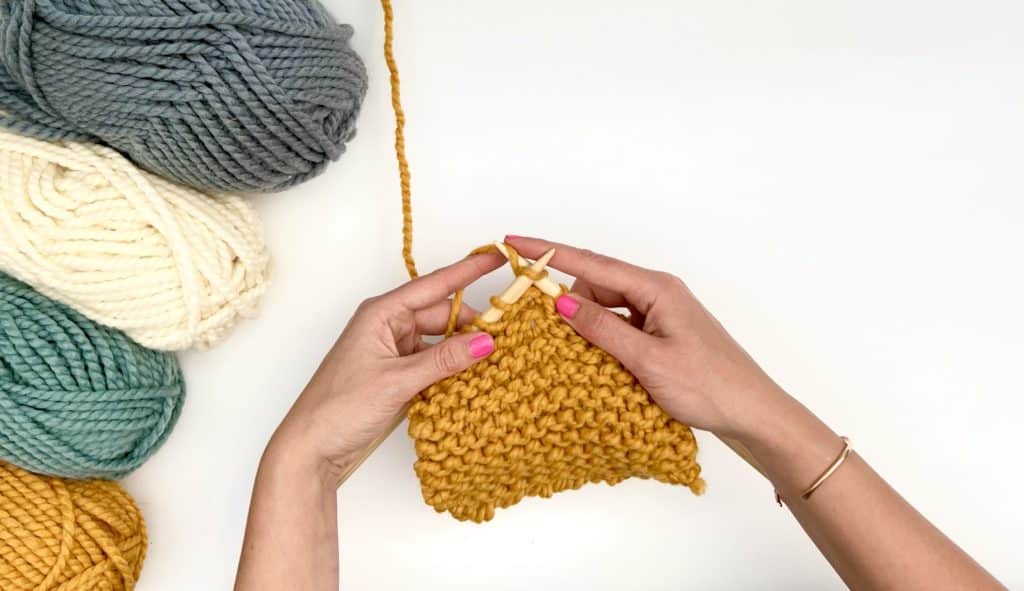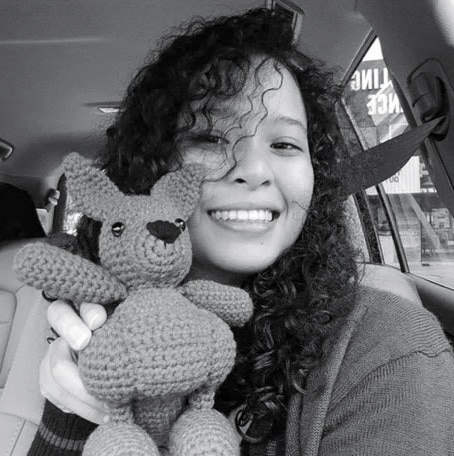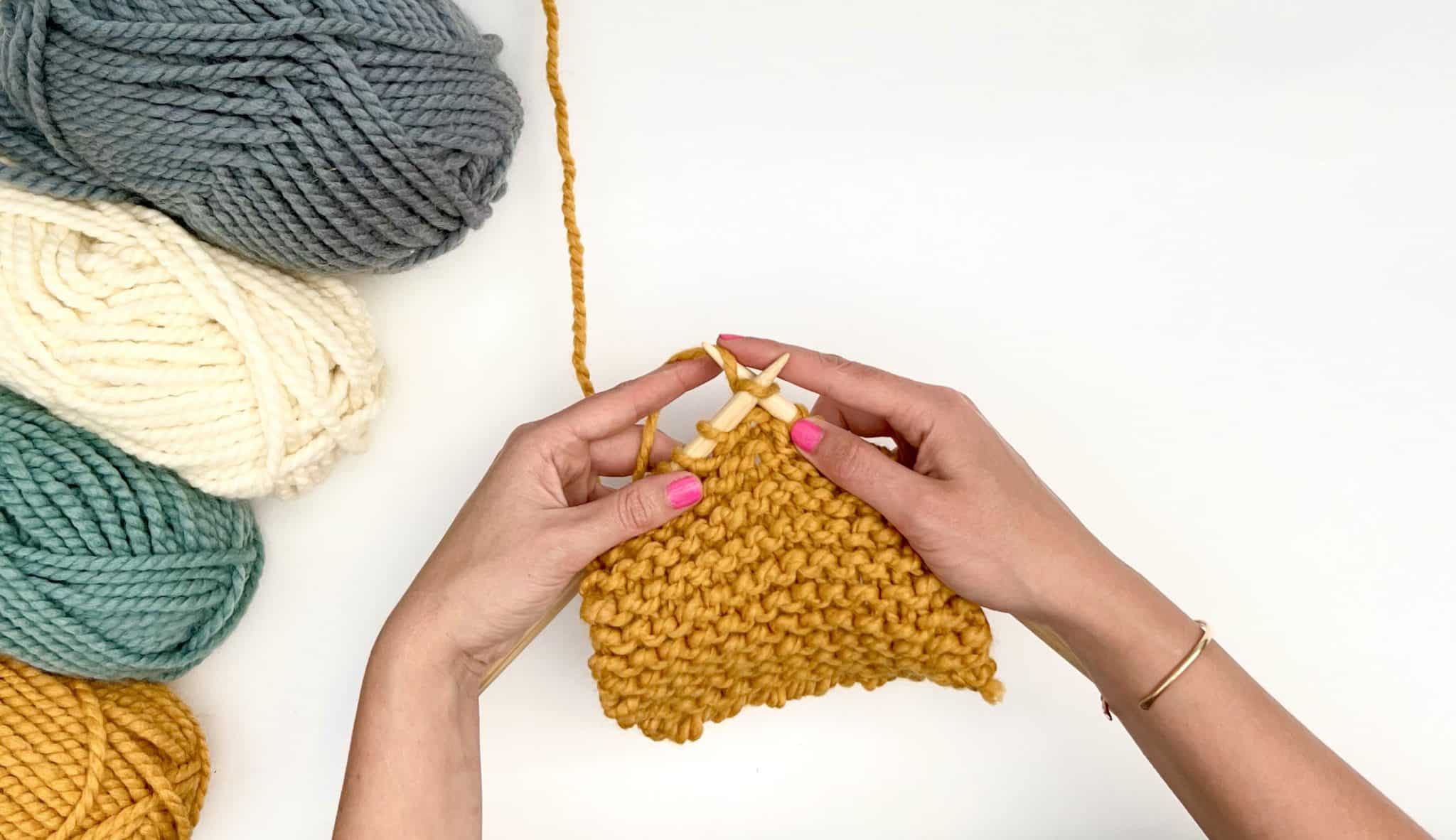Knitting in the dark might sound a bit wild, but it’s a skill that comes in handy more than you’d think. Imagine those long car rides, cozy movie nights, or just winding down without a bright lamp. It's the perfect way to sneak in a few more rows on your project without disturbing anyone.
Why You Should Try Knitting in the Dark
Beyond just being practical, knitting in the dark is a super relaxing, meditative experience. It’s a chance to disconnect from the visual noise of screens and daily life. You get to focus purely on the rhythmic click of your needles and the feel of the yarn.
This practice helps you connect with your craft on a deeper, more intuitive level. You’ll build an amazing sense of touch and muscle memory. Before you know it, you might even be able to tell a knit stitch from a purl just by feel.
The Ultimate Relaxation Hack
One of the biggest wins here is the profound sense of calm it can bring. Knitting in low light encourages a mindful, almost zen-like state. You’re not just making something; you’re carving out a peaceful moment just for yourself.
To lean into the tranquil vibes, try creating a full sensory experience with relaxing scented candles. Setting the right mood elevates your crafting time into a true self-care ritual. This makes your hobby that much more rewarding.
Mastering this skill makes you a more confident and versatile knitter. You'll be ready for any lighting situation, from a dimly lit living room to a long-haul flight.
Practical Perks for Every Crafter
Let’s be real, life gets busy. Finding dedicated, well-lit time to knit isn't always in the cards. Learning to embrace the darkness opens up a ton of new opportunities to get your stitches in.
Here are a few real-world scenarios where this skill is a total game-changer:
- Movie Nights: Keep your hands busy during a movie marathon without distracting from the screen.
- Bedtime Crafting: Wind down for sleep without a bright light keeping you or your partner awake.
- Travel: Make progress on projects during overnight flights or as a passenger on a long road trip.
Choosing Your Tools For Low-Light Knitting
Getting your gear right is the secret to a chill session of low-light knitting. It’s what separates a peaceful escape from a tangled, frustrating mess. Forget squinting at your stitches; let’s dive into the tools designed to make your life easier.
The right equipment can completely transform your experience.
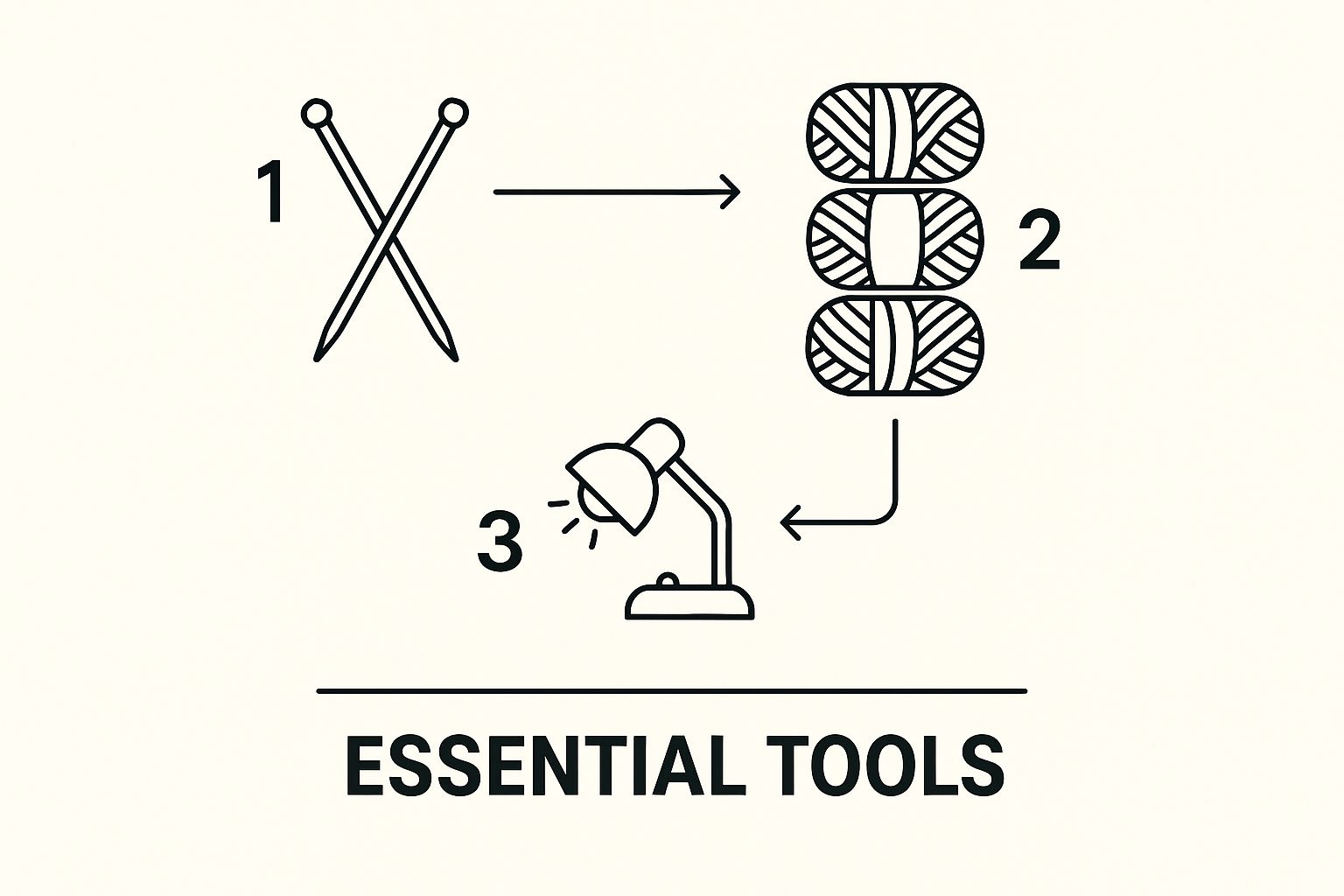
A mix of specialized lighting and the right needle material is your ticket to a successful project.
Lighted Needles and Hooks
The absolute game-changer for knitting in the dark is a set of lighted knitting needles. These genius tools have tiny, built-in LED lights right at the tip. They put light exactly where you need it most—on your active stitch.
They’re perfect for movie nights because the light is so focused it won't disturb anyone else. When you're shopping, look for options with replaceable batteries and a comfy grip. They're an amazing investment if you often knit in dim environments.
The best part about lighted needles? The light moves with your work, so you'll never have to reposition a lamp or struggle with shadows again.
Hands-Free Lighting Solutions
If lighted needles aren't your vibe, a hands-free neck light is your next best friend. These flexible lights drape comfortably around your neck, with adjustable arms you can point at your lap. They cast a wider pool of light, which is helpful for seeing your overall project.
This is a fantastic, versatile option that works for any craft, not just knitting. I've used mine for everything from late-night reading to detailed cross-stitch projects. Plus, it’s one gadget the whole family might end up borrowing!
The Right Needle Material Matters
Don't underestimate the power of your regular, non-lit needles! The material and color can make a huge difference in visibility. It’s all about creating contrast against your yarn.
- Light-Colored Needles: Opt for needles made of light-colored bamboo or brightly colored metal. These create a stark contrast against darker yarns, making stitches easier to identify.
- Avoid Dark Needles: Dark carbon fiber or deep-toned rosewood needles can become nearly invisible with dark yarn. Trust me, that's a recipe for dropped stitches and a lot of frogging.
Ultimately, the right tool is the one that makes your crafting time more enjoyable and less of a strain on your eyes. The growing community of crafters is driving the demand for these kinds of specialized tools.
Selecting the Best Yarn and Projects
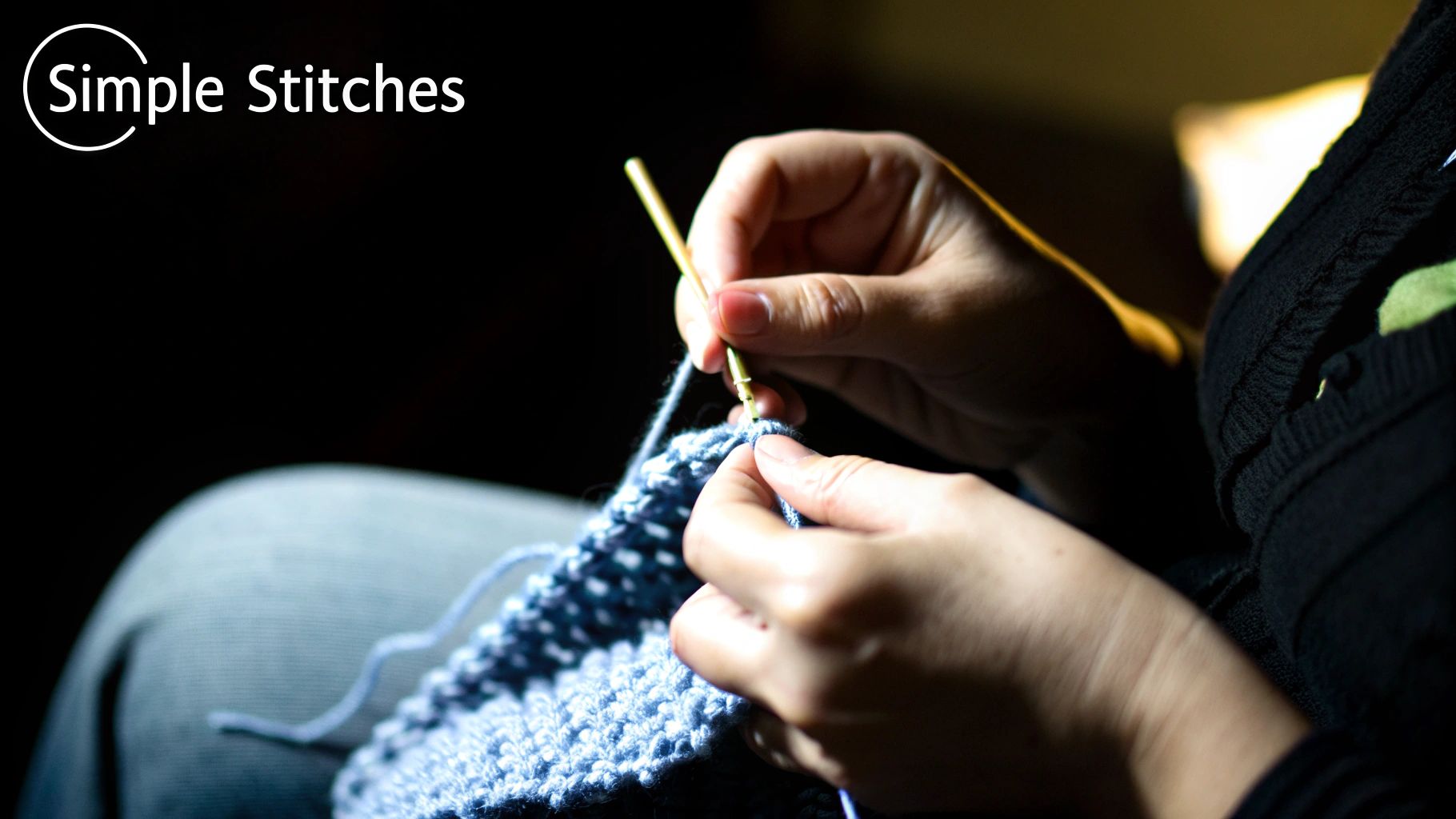
When you're knitting by the glow of the TV, the yarn you choose can make or break the experience. The trick is to pick your materials before you cast on. This sets you up for a relaxing session instead of a frustrating one.
Your new best friends are yarns that are smooth, light-colored, and a bit on the thicker side. Think worsted, aran, or bulky weights. They have enough substance for your fingertips to easily distinguish one stitch from the next.
This isn't some new idea; it's a practical skill knitters have used for generations. Knitting has always been a popular evening activity, often done by candlelight or firelight. If you're curious, you can check out the latest knit clothing market research to see how deep the tradition runs.
Yarn Types to Avoid
Now, let's talk about the yarns to leave in your stash for a well-lit day. Fuzzy or novelty yarns like mohair and bouclé are a definite no-go. Their halo makes it almost impossible to feel your individual stitches, which is a recipe for disaster.
Likewise, you'll want to steer clear of splitty yarns and dark colors. A yarn that splits easily means you'll constantly be piercing the plies instead of the loop. And that gorgeous black or navy yarn will completely disappear in dim light, turning your project into a guessing game.
Picking the Perfect Project
Once you've got the right yarn, it’s time to choose a pattern. The key here is to find a project that relies on muscle memory, not constant visual checks. Simplicity is your friend.
Think of it this way: you want a project that’s more about rhythm and repetition than complex stitch-counting. This is your chance to chill out, not challenge yourself.
Projects built on basic stitches like garter or stockinette are ideal. They allow your hands to fall into an automatic rhythm. Save that intricate lace shawl or cabled sweater for when you have bright, direct light. For your next project, you might find our guide on how to knit a hat or how to knit a scarf useful.
How to Master Knitting by Feel
The real secret to knitting in the dark isn’t about having bionic eyes. It’s about teaching your hands to see for you. This skill lets you work entirely by feel, turning you into a knitting ninja ready to craft anywhere.
It all starts with how you hold your yarn and needles. You don't need to see your work to create consistent tension. Focus on a relaxed grip and let the yarn glide smoothly over your index finger.
Learning to Read Your Stitches
Your fingertips are about to become your new eyes. Start in full light, practicing how to identify your stitches purely by touch. A knit stitch feels like a small "v," while a purl stitch has an obvious horizontal "bump" under the needle.
Gently run your finger over the stitches on your needle to feel the difference. Once you can tell them apart without peeking, you're on your way. That tactile feedback is everything when the lights are low.
You can also use your fingers to find mistakes before they become a big deal. A dropped stitch often feels like a rogue loop or a sudden gap. Catching it with your fingers saves you from fixing a massive ladder later on.
Your hands already know more than you think. Learning to knit by feel is about trusting your muscle memory and paying attention to the texture of your work.
Practice Makes Progress
Ready to try it out? The trick is to start with a simple, low-stakes exercise. You don't need to dive right into knitting in a pitch-black room.
Here’s a fantastic way to begin:
- Grab some smooth, worsted-weight yarn and a pair of needles you love.
- Knit a small stockinette swatch.
- Now, try knitting for a few minutes with your eyes closed. Focus on the sensation of the stitches and the motion of your hands.
Doing this little exercise regularly will make a huge difference. It retrains your brain to rely on touch instead of sight. This unlocks a whole new level of confidence in your crafting.
Fixing Common Low Light Knitting Problems
So you’re in the zone, knitting in the dark, when that dreaded feeling hits—you've dropped a stitch. Don’t panic! It happens to everyone, and it's totally fixable, even when you can barely see.
When you feel that loose loop, the key is to stop immediately. Gently slide your stitches back a bit on the needle to give yourself room to work. The trick is to troubleshoot with your fingers before you even turn on a light.
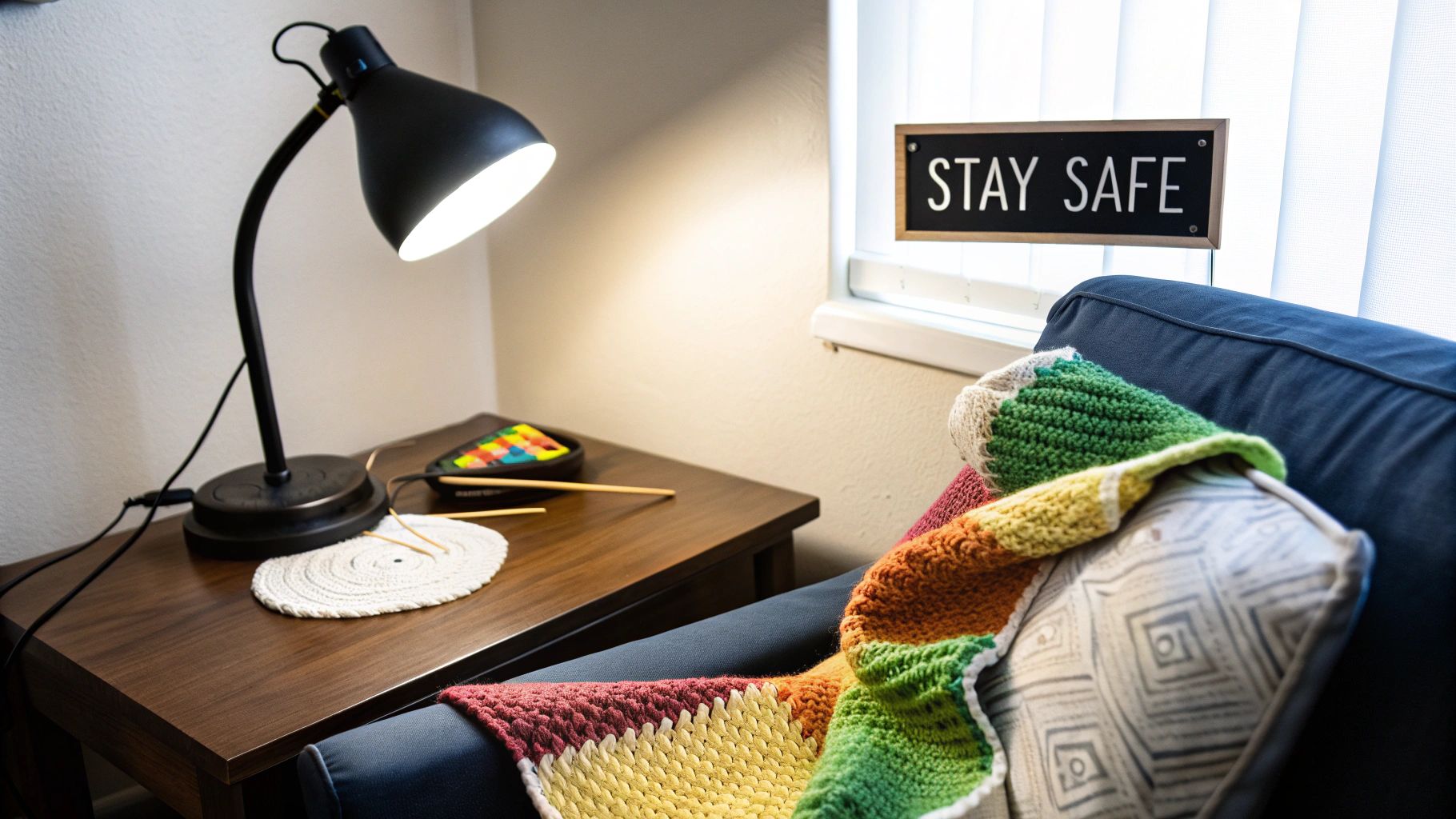
Finding and Fixing Mistakes
Your first move should be to use your fingertips to find the runaway stitch. Trace the column of stitches directly below the empty spot on your needle until you feel the loop. If you have a lighted crochet hook, now is its time to shine.
No special tools? Use a regular crochet hook or the tip of your other needle to scoop up the lost stitch. Simply pull it up through the horizontal "ladder" rungs until it’s safely back on your needle.
Don't let a mistake derail your chill knitting session. Staying calm and trusting your sense of touch is more effective than frantically searching in the dark.
Keeping track of your progress is another common hurdle. A simple but brilliant hack is to use stitch markers. Place a marker every 10 or 20 rows so you can easily count them by feel without losing your place.
This problem-solving mindset isn't just for hobbyists. The massive global knitted fabric market often relies on around-the-clock production, so industrial settings have perfected ways to handle issues quickly. You can learn more about the scale of knitted fabric production to appreciate the innovations.
Common Questions About Knitting in the Dark
Diving into knitting in the dark can feel a bit mysterious, so it's normal to have questions. Let's clear up some of the most common things people wonder about.
A big one is, "Is this bad for my eyes?" The whole point is to knit by feel, not by sight. You're training your hands and building muscle memory, using your sense of touch to guide you.
The ultimate aim is to rely less on your vision and more on your tactile skills. If you feel discomfort, add a bit more light—this should be relaxing, not a strain!
What to Knit First
So, where should you start? The undisputed champion for your first time is a simple garter stitch scarf. It's the perfect training ground because it's flat, repetitive, and lets you get into an easy rhythm.
Once you're feeling more confident, you can try these out:
- A basic dishcloth using a chunky, light-colored cotton yarn.
- A simple blanket square made with bulky yarn.
What About Crochet
Can you use these tips for crocheting in the dark? Absolutely! The core idea is exactly the same. Your best friend for this will be a lighted crochet hook, which shines a focused beam of light right where you need it.
Just like with knitting, start with smooth, light-colored yarn and stick to simple stitches. Some crocheters find projects worked in the round, like a basic beanie, are even easier. It's all about finding what feels most natural for you.
At Knitting.com, we're here to guide you through every new skill you want to learn. Explore our huge library of free tutorials, patterns, and expert articles to build your confidence. Visit us at https://knitting.com to start your next project today.
